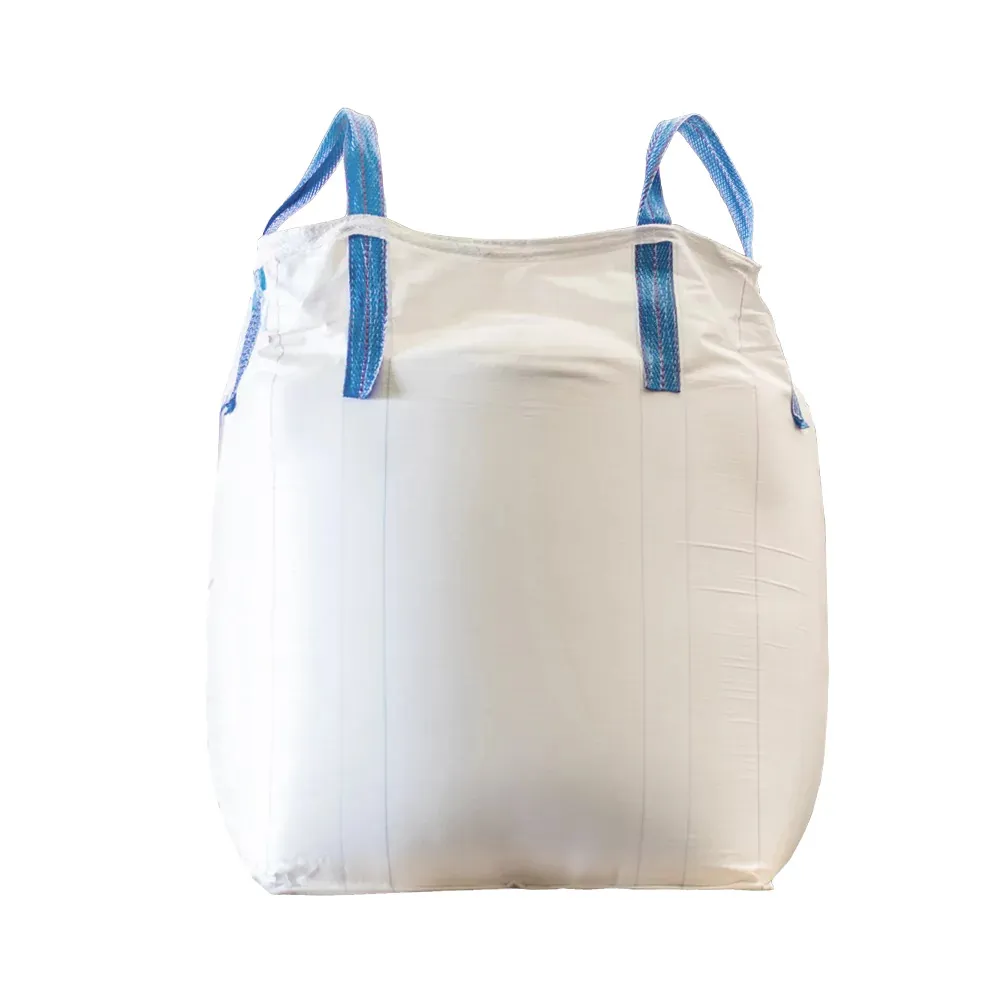
Understanding FIBC Bags
FIBC bags are typically made from woven polypropylene and are designed to carry heavy loads. They come in various configurations to meet the specific needs of different materials. Here, we will explore several key aspects of FIBC bags that contribute to their effectiveness in preventing leakage of fine powders.
Features of FIBC Bags
- Design Variability: FIBC bags are available in different styles and designs to suit specific needs. The most common types include:
- U-Panel Bags: These are constructed from a single piece of fabric, resulting in fewer seams and reduced risk of leakage.
- Circular Bags: Made from circular woven fabric, these bags provide a seamless design that enhances strength and durability.
- Baffle Bags: Designed with internal baffles, these bags prevent bulging and increase stability, making them easier to stack and transport.
- Capacity and Size: FIBC bags can typically hold between 500 kg to 2000 kg, depending on their design and construction. This high capacity makes them ideal for bulk handling of powders.
- Material Composition: The use of high-quality woven polypropylene is crucial for producing FIBC bags. This material is strong, lightweight, and resistant to moisture, ensuring the safe transport of various chemical powders.
Preventing Powder Leakage
Leakage prevention is a critical factor when it comes to packing fine powders in FIBC bags. The following features and techniques contribute to achieving this:
1. Outer Coating
The outer layer of FIBC bags often includes a film or coating that provides an additional barrier against dust and moisture. For example, bags can be manufactured with a PE (polyethylene) liner that acts as a moisture barrier. This liner prevents moisture absorption, which is particularly important for hygroscopic materials that can clump or lose their integrity when exposed to humidity.
2. Internal Liner
Using an internal liner is one of the most effective methods to prevent powder leakage. These liners can be made of various materials such as PE or specialized film that provides an airtight seal. The internal liner helps to contain the powders and reduces the risk of fine particles escaping during handling, transportation, and storage. This is especially beneficial when dealing with materials like titanium dioxide and calcium titanate, which can be prone to dusting.
3. Weaving Technique
The weaving technique used in the production of FIBC bags significantly influences their ability to prevent leakage. By increasing the density of the woven fabric, manufacturers can create a tighter mesh that minimizes the gaps between the fibers. This increased density helps to contain fine particles, reducing the risk of leakage. Advanced weaving technologies, such as multi-layer weaving, can also enhance the overall strength and integrity of the bags.
4. Sealing Techniques
Effective sealing methods are crucial for maintaining the integrity of FIBC bags. Common sealing techniques include:
- Heat Sealing: This method involves applying heat to the edges of the bag to create a strong bond that prevents powder from escaping.
- Sewn Seams: High-quality stitching techniques ensure that seams are tight and durable. The use of heavy-duty thread and double stitching further reinforces the seams, providing extra protection against leaks.
5. Quality Control
Stringent quality control measures during the manufacturing process are essential to ensure that FIBC bags meet the necessary performance standards. Regular testing for material strength, seam integrity, and leakage resistance helps to ensure that each batch of bags performs effectively in real-world applications.
Application of FIBC Bags in Chemical Packaging
The application of FIBC bags is extensive in the chemical industry due to their efficiency and reliability. Let’s explore how these bags are specifically suited for handling various chemical powders.
| Chemical Powder | Characteristics | FIBC Bag Features |
|---|---|---|
| Titanium Dioxide | Fine, white powder, hygroscopic | PE liner, baffle design |
| Color Pigments | Can be prone to dusting | Inner liner, dense weaving |
| Calcium Titanate | Fine powder, moisture-sensitive | Moisture-proof coating |
| Silica Powder | Free-flowing, can create dust clouds | Heat sealed seams |
| Latex Powder | Sticky, can clump | Internal liner |
| Sodium Carbonate | Hygroscopic, prone to caking | Baffle design, PE liner |
| Zinc Sulfate | Fine, highly soluble | Moisture barrier, high density |
Conclusion
In conclusion, FIBC bags are vital for ensuring the safe and efficient packaging of various chemical powders. Their design, material composition, and innovative sealing techniques play a significant role in preventing leakage and maintaining product integrity. As industries continue to evolve, the demand for reliable and effective packaging solutions like FIBC bags will only grow, making them an indispensable tool in the chemical packaging sector. With continuous advancements in technology and materials, the future of FIBC bags looks promising, ensuring that they remain at the forefront of bulk packaging solutions.